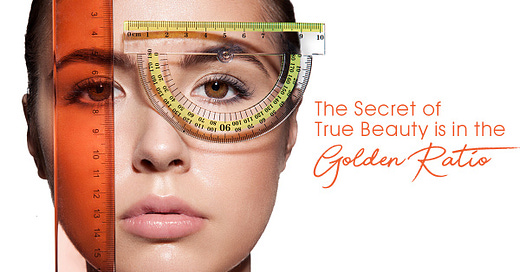The Secret Code of Beauty: Unlocking Nature's Golden Ratio
Unveiling Nature's Blueprint: The Golden Ratio, Where Math Meets Beauty
Beauty has long been a subject of fascination, inspiring artists, philosophers, and scientists alike. But what makes something visually appealing? Is beauty merely subjective, or is there a universal code that underlies our perception of attractiveness? The answer may lie in a mathematical concept known as the Golden Ratio, a mysterious and elegant proportion that appears repeatedly in nature, art, and architecture. Often referred to as nature's secret code, the Golden Ratio has been hailed as the key to unlocking the mysteries of beauty.
What is the Golden Ratio?
The Golden Ratio, denoted by the Greek letter φ (phi), is approximately equal to 1.618. It is derived from the Fibonacci sequence, a series of numbers where each number is the sum of the two preceding ones (0, 1, 1, 2, 3, 5, 8, 13, 21, and so on). As the sequence progresses, the ratio between consecutive numbers approaches the Golden Ratio. This proportion is unique because it creates a sense of balance, harmony, and aesthetic perfection.
Mathematically, the Golden Ratio can be expressed as (a + b)/a = a/b = φ. This ratio has been used for centuries to create visually pleasing compositions, from the Parthenon in ancient Greece to the works of Leonardo da Vinci.
The Golden Ratio in Nature
One of the most compelling aspects of the Golden Ratio is its prevalence in the natural world. From the spirals of seashells to the arrangement of leaves on a stem, nature seems to follow this divine proportion. For example, the nautilus shell grows in a logarithmic spiral that adheres to the Golden Ratio. Similarly, the seeds in a sunflower or the scales of a pineapple are arranged in patterns that align with Fibonacci numbers, reflecting the Golden Ratio.
Even the human body exhibits this proportion. The distance from the top of the head to the navel, compared to the distance from the navel to the feet, often approximates the Golden Ratio. The same can be said for the proportions of the face, where the width of the nose, the spacing of the eyes, and the shape of the lips often align with this ratio. This may explain why certain facial features are universally considered attractive.
The Golden Ratio in Art and Architecture
Artists and architects have long harnessed the power of the Golden Ratio to create works that resonate with viewers on a subconscious level. Leonardo da Vinci's *Vitruvian Man* is a prime example, illustrating the ideal human proportions based on the Golden Ratio. Similarly, the Parthenon in Athens is designed with dimensions that reflect this ratio, contributing to its timeless beauty.
In modern times, the Golden Ratio continues to influence design. The Apple logo, for instance, is crafted using circles whose diameters follow the Golden Ratio, creating a sense of harmony and balance. Even the layout of websites and advertisements often incorporates this proportion to enhance visual appeal.
The Golden Ratio in Everyday Life
The Golden Ratio isn't confined to grand works of art or natural wonders; it can be found in everyday objects and experiences. Credit cards, book covers, and even smartphone screens often adhere to proportions close to the Golden Ratio. This is because these dimensions feel natural and pleasing to the human eye.
In photography, the rule of thirds—a simplified version of the Golden Ratio—is used to compose visually striking images. By aligning key elements along the lines or intersections of a grid divided into thirds, photographers create balanced and engaging shots.
Why Does the Golden Ratio Appeal to Us?
The universal appeal of the Golden Ratio may be rooted in our evolutionary biology. Humans are hardwired to seek patterns and symmetry, as these traits often indicate health, vitality, and fitness in nature. The Golden Ratio represents an ideal balance between order and complexity, making it inherently satisfying to the human brain.
Moreover, the Golden Ratio's presence in nature may have conditioned us to associate it with beauty and harmony. Whether it's the spiral of a galaxy or the petals of a flower, the recurrence of this proportion in the world around us has shaped our aesthetic preferences.
Conclusion
The Golden Ratio is more than just a mathematical curiosity; it is a fundamental principle that underpins the beauty we see in the world. From the intricate patterns of nature to the masterpieces of human creativity, this divine proportion serves as a bridge between art and science, offering a glimpse into the universal code of beauty. By understanding and applying the Golden Ratio, we can unlock new dimensions of aesthetic appreciation and create works that resonate with the timeless harmony of the natural world. Whether you're an artist, a designer, or simply someone who appreciates beauty, the Golden Ratio is a key to unlocking the secrets of visual perfection.
The Flying Factor: Why American Cars Still Lead
When it comes to the automotive industry, American cars have long held a unique position in the global market. Despite fierce competition from European and Asian manufacturers, American automakers continue to lead in several key areas. From innovation and performance to cultural influence and adaptability, the "flying factor" of American cars keeps them…





